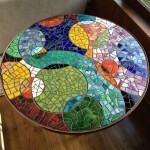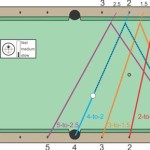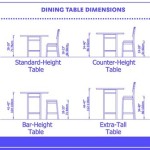Counter Height Wood Table Legs: A Comprehensive Guide
Counter height tables have become increasingly popular in both residential and commercial settings. Their elevated height offers a versatile surface for dining, food preparation, or casual gatherings. A crucial element in achieving both the desired aesthetic and functionality of these tables is the selection of appropriate counter height wood table legs. These legs not only provide structural support but also contribute significantly to the overall style and character of the table.
This article will explore the various aspects of counter height wood table legs, including the standard dimensions, available wood species, design considerations, installation techniques, and factors influencing the choice of suitable legs for different table configurations. By understanding these elements, individuals can make informed decisions when selecting wood legs for their counter height table projects.
Understanding Counter Height Dimensions
The defining characteristic of a counter height table is its height, which typically ranges from 34 to 36 inches. This standard height aligns with the average counter height found in kitchens and bars, allowing for comfortable seating with counter stools or chairs. Consequently, counter height table legs are designed to achieve this specific overall table height. To calculate the necessary leg length, one must consider the thickness of the tabletop. If a tabletop is 2 inches thick, then legs of approximately 32 to 34 inches in length would be required to reach the desired counter height.
Accurate measurement is paramount when ordering or crafting counter height table legs. Deviations from the standard height can result in ergonomic discomfort or an awkward aesthetic. Before purchasing or crafting legs, it is advisable to measure the existing counter space or the intended seating to ensure seamless integration. Consider any intended use of the table. Will it be primarily for dining, food preparation, or casual social gatherings? The intended use will influence the leg design, wood species, and overall table stability requirements. A table intended for heavy food preparation may require sturdier, thicker legs than one for purely aesthetic purposes.
It is important to account for leveling adjustments. Even on seemingly level floors, slight variations can cause a table to wobble. Adjustable feet are often incorporated into the leg design to compensate for such imperfections. These adjustable feet allow for fine-tuning the table's height and ensuring a stable, wobble-free surface. The selection of adjustable feet should be considered alongside the wood species and leg design to maintain a consistent aesthetic.
Wood Species Considerations
The choice of wood species for counter height table legs plays a significant role in determining the table's aesthetic appeal, durability, and overall cost. Different wood species possess unique characteristics, including grain patterns, color variations, hardness, and resistance to moisture and wear. Selecting the appropriate wood species is crucial for achieving the desired look and ensuring the longevity of the table. Hardwoods, such as maple, oak, cherry, and walnut, are commonly used for table legs due to their inherent strength and durability. These woods can withstand the rigors of daily use and are less prone to denting or scratching.
Maple is a popular choice for its light, neutral color and fine grain pattern. It is a versatile wood that can be stained or painted to match a wide range of interior design styles. Oak is another widely used hardwood, known for its distinctive grain pattern and exceptional strength. Oak is available in various shades, from light to dark, and is often finished with a clear coat to highlight its natural beauty. Cherry is prized for its rich, reddish-brown color and smooth texture. It is a luxurious wood that adds a touch of elegance to any table. Walnut is a dark, dense hardwood with a distinctive grain pattern. It is a sophisticated choice that adds a sense of warmth and richness to a space.
Softwoods, such as pine and fir, are generally less expensive than hardwoods but are also less durable. While they may be suitable for certain applications, such as purely decorative tables, they are not recommended for tables that will be subjected to heavy use. Wood finishes also play a crucial role in determining the table's overall appearance and its resistance to moisture and wear. Common finishes include varnish, lacquer, polyurethane, and oil finishes. Each finish offers different levels of protection and aesthetic appeal. It's vital to select a finish that complements the chosen wood species and meets the specific requirements of the table's intended use.
Design and Style Considerations
The design and style of counter height wood table legs are integral to the overall aesthetic of the table. The leg design should complement the tabletop material, the surrounding décor, and the intended use of the table. Various leg styles are available, ranging from simple, straight legs to more ornate, tapered, or turned designs. The choice of leg style should reflect the desired aesthetic and the overall design concept of the space. Straight legs offer a clean, minimalist look that is well-suited for modern or contemporary settings. Tapered legs add a touch of elegance and sophistication, while turned legs create a more traditional or rustic feel.
The thickness and shape of the legs also contribute to the table's overall stability and visual appeal. Thicker legs provide greater structural support and are often preferred for larger or heavier tabletops. The shape of the legs can also influence the table's style. Square legs offer a more formal look, while round legs create a softer, more casual feel. Consider the integration of stretchers or aprons between the legs. These structural elements not only enhance the table's stability but can also add a decorative touch. Stretchers can be made from the same wood species as the legs or from a contrasting material to create visual interest.
Pay attention to the details of the leg design, such as the shape of the feet or the presence of decorative carvings. These small details can significantly impact the table's overall aesthetic. The finish of the legs should also complement the tabletop and the surrounding décor. Staining or painting the legs can create a cohesive look, while leaving the wood natural can highlight its inherent beauty. The hardware used to attach the legs to the tabletop should also be carefully selected. Choose hardware that is both functional and aesthetically pleasing, such as decorative brackets or concealed fasteners. Thoughtful hardware selection contributes to a polished and professional final product.
Installation and Attachment Techniques
Proper installation and attachment of counter height wood table legs are crucial for ensuring the table's stability and longevity. The legs must be securely attached to the tabletop using appropriate fasteners and techniques. The specific attachment method will depend on the design of the legs, the material of the tabletop, and the desired level of permanence.
One common method involves using wood screws to attach the legs directly to the tabletop. This method is relatively simple and straightforward, but it requires careful alignment and pre-drilling of pilot holes to prevent splitting the wood. Another method involves using metal brackets or plates to attach the legs to the tabletop. These brackets provide a more secure and stable connection, especially for heavier tabletops. Some legs are designed with pre-installed threaded inserts, which allow for easy attachment using bolts or screws. This method offers a clean and professional look, as the fasteners are concealed within the legs. Using glue in conjunction with screws or bolts can further enhance the stability of the connection. High-quality wood glue creates a strong bond between the leg and the tabletop, preventing the legs from loosening over time.
It is essential to ensure that the legs are properly aligned and squared before tightening the fasteners. Misaligned legs can cause the table to wobble or lean. A carpenter's square can be used to check the alignment of the legs. Carefully inspect the connections after installation to ensure that all fasteners are tight and secure. Periodically check the tightness of the fasteners and re-tighten them as needed to prevent the legs from loosening over time. Using leveling feet is a useful addition to manage minor floor imperfections. These feet are often adjustable and allow you to fine-tune the height of each leg individually, ensuring a level and stable surface.
Factors Influencing Choice
Several factors influence the appropriate choice of counter height wood table legs for a specific project. These factors encompass the table's intended use, the overall design aesthetic, the budget constraints, and the desired level of durability. Carefully considering these factors will enable individuals to make informed decisions and select legs that meet their specific needs and preferences.
The table's intended use will dictate the required strength and stability of the legs. A table intended for heavy use, such as food preparation or dining, will require sturdier legs than a table primarily used for decorative purposes. The overall design aesthetic will influence the choice of leg style, wood species, and finish. The legs should complement the tabletop material, the surrounding décor, and the overall design concept of the space. Budget constraints may limit the choice of wood species and leg styles. Softer woods or simpler leg designs are generally less expensive than hardwoods or more ornate designs. The desired level of durability will influence the choice of wood species and finish. Hardwoods and durable finishes are more resistant to moisture, scratches, and dents, making them ideal for tables that will be subjected to heavy use.
The size and shape of the tabletop will also influence the choice of leg size and placement. Larger or heavier tabletops may require thicker legs or additional support to prevent sagging or wobbling. Furthermore, the base style of the legs should be compatible with the floor type. For example, on delicate flooring, it might be prudent to select legs with broader feet or install felt pads to prevent scratches and marking. It's beneficial to research different manufacturers and suppliers of wood table legs. Comparing prices, quality, and product offerings will ensure that you find a reputable supplier that meets your specific needs. Additionally, read customer reviews and testimonials to gauge the supplier's reliability and the quality of their products. Careful research will help avoid common pitfalls and ensure a successful project.

Bar Table Legs H40 Handmade Metal Set Of 4 Pcs Counter Height Furniture Flowyline Design 606 Faras

Counter Height Solid Wood Table Island Bar Thick Top Custom Metal Leg Base Sizes Welcome

Counter Bar Table Legs 606 Faras For Live Edge Tabletop Metal Console

30 X 42 Solid Wood Counter Height Table With Turned Legs Unfinished International Concepts Dining

Trapezoid Metal Legs Bar Height Counter Table Bench Console Dining Desk Set Of 2 Yako 80 20

Bar Height Dining Table For Restaurant Counter Made With Barn Wood Recycled Coffee Steel Legs

Bar Table Legs H40 Handmade Metal Set Of 4 Pcs Counter Height Furniture Flowyline Design 606 Faras Modern Coffee

Counter Height Or Bar Dining Table Made With Reclaimed Wood And Steel U Shaped Legs In Your Choice Of Color Size Thickness Finish Denmark

30 X 42 Solid Wood Counter Height Table With Turned Legs Unfinished International Concepts Target

International Concepts Espresso 30 Square Counter Height Table K581 3030 36s The Home Depot
Related Posts








